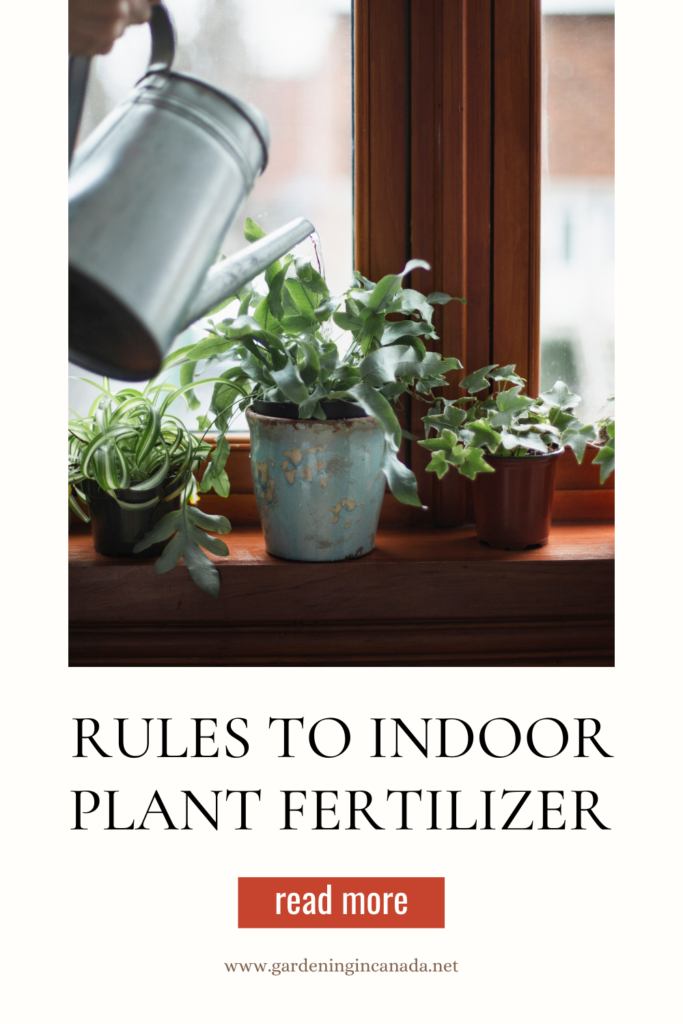- Canada’s Growing Zones Are Changing 2024 - January 12, 2024
- Attracting Wildlife To The Garden - May 16, 2023
- How To Garden Near A Septic Tank - May 9, 2023
Hello and welcome to our guide on fertilizing indoor plants! In this video, we’ll cover everything you need to know about choosing and using fertilizers to keep your indoor plants healthy and thriving.
What is fertilizer?
First, let’s start with the basics. What is fertilizer, and why do indoor plants need it? Fertilizer is a chemical or natural substance that is added to soil to provide plants with the nutrients they need to grow and thrive. These nutrients include things like nitrogen, phosphorus, and potassium, as well as trace elements like iron, zinc, and manganese.
While soil contains some of these nutrients naturally, they can often be depleted over time, especially in pots or containers where plants are grown. This is where fertilizer comes in. By adding an all-purpose fertilizer to your plants, you can help ensure that they have access to all of the nutrients they need to grow strong and healthy.
Here are some of my topic Houseplant Fertilizer choices:
Now that we know why fertilizer is important, let’s talk about the different types of fertilizers available. There are two main types of fertilizers: synthetic and organic. Synthetic fertilizers are chemically based and are typically more concentrated and faster-acting than organic fertilizers. They are also generally easier to find and more affordable than organic options. However, synthetic fertilizers can have negative impacts on the environment and can be harmful if ingested by humans or pets.
Organic Vs. Synthetic Fertilizer
Organic fertilizers, on the other hand, are made from natural sources like compost, bone meal, and blood meal. They are generally slower-acting than synthetic fertilizers, but they are considered safer for the environment and for humans. They also help to improve soil structure and fertility over the long term.
When choosing a fertilizer for your indoor plants, it’s important to consider the specific needs of the plant. Different plants have different nutrient requirements, and using the wrong fertilizer can lead to deficiencies or even damage to the plant. Look for a fertilizer that is specifically formulated for indoor plants or for the type of plant you are growing.
How Much Fertilizer
Once you have chosen a fertilizer, it’s important to follow the instructions on the package for proper application. Overfertilizing can be just as harmful as under-fertilizing, so be sure to measure and mix the fertilizer according to the recommended amounts.
In general, it’s a good idea to fertilize your indoor plants once every one to two months, depending on the plant and the type of fertilizer you are using. Some plants, like succulents and cacti, have low nutrient requirements and only need to be fertilized every few months or even once a year. Other plants, like ferns and palms, may need more frequent fertilization.
It’s also important to remember that plants in pots or containers may need more frequent fertilization than plants grown in the ground, as the nutrients in the soil can be more easily depleted.
Soil Testing
Here is the soil test kit that I am using.
Finally, it’s a good idea to do a soil test before fertilizing to determine which nutrients are lacking in the soil. This can help you choose the right fertilizer and ensure that you are providing your plants with the nutrients they need.
We hope this article has helped you understand the importance of fertilizing your indoor plants and how to choose and apply fertilizers safely and effectively. Happy gardening!

